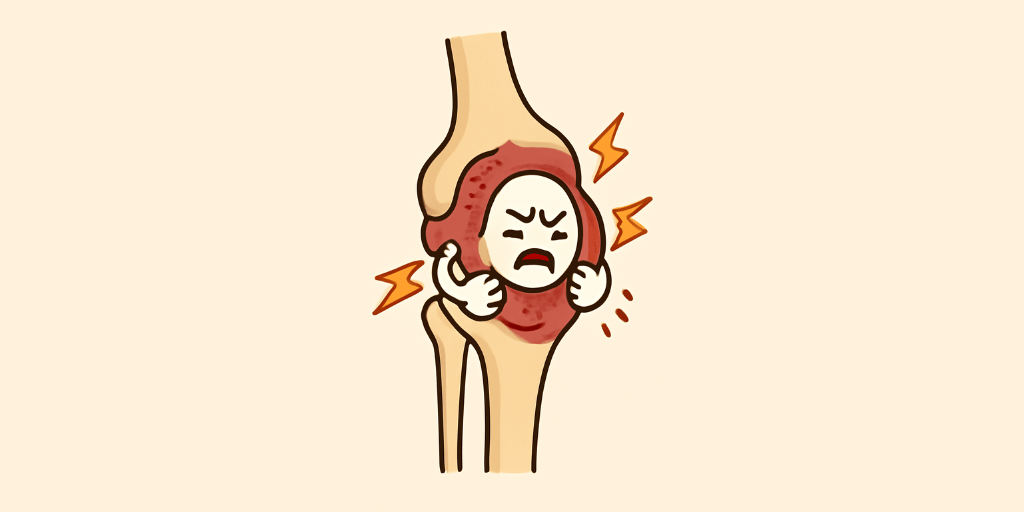Ayurvedic Name: Kroshtukasheersha
Description:
Synovitis is a condition predominantly occuring in Knee joint. This is usually caused due to any external trauma or injury. This is a vaat dominant disease and affects the blood tissues in our body in the way of its pathogenesis. Either resulting from trauma or any acute infection in the joint. It includes redness , swelling and deformity of the knee joint.
Signs & Symptoms:
- Tantuja Amavata (Traumatic Arthritis): Joint pain, swelling, and stiffness following an injury.
- Sandhishoola (Joint Pain): Throbbing or aching pain that worsens with movement or pressure.
- Shotha (Swelling): Visible swelling around the affected joint, often accompanied by warmth and tenderness.
- Stambha (Stiffness): Decreased range of motion and difficulty in moving the joint.
- Rakta Prakopa (Blood Thinning): Internal bleeding in the joint or surrounding tissues, leading to increased inflammation.
- Gaurava (Heaviness): A feeling of heaviness or discomfort in the injured area.
Diagnosis:
MRI or Joint Ultrasound for Synovial Fluid Assessment
Risk Factors:
- Dietary Factors
Excessive intake of processed or sugary foods, which can contribute to inflammation and worsen arthritis symptoms.
A diet low in anti-inflammatory foods like omega-3-rich fish or leafy greens. - Lifestyle Factors
Physical injury, trauma, or overuse of joints, leading to inflammation and pain.
Sedentary lifestyle leading to weak muscles and joints, making them more prone to injury. - Medical Conditions
Previous joint injuries or surgeries that can lead to arthritis later in life.
Conditions like gout, rheumatoid arthritis, or autoimmune diseases that increase the risk of developing arthritis.
Complications:
- Joint Deformities (Sandhivakrata): Untreated or severe traumatic arthritis can cause permanent deformities in the affected joints.
- Chronic Pain (Shoola): Long-term joint inflammation leads to ongoing pain, especially with movement or activity.
- Loss of Functionality (Aparipurnata): Joint deformities and stiffness can result in the loss of functionality and independence.
- Reduced Range of Motion (Chalana Avikriti): Difficulty in moving the affected joint, leading to reduced mobility and activity levels.
- Muscle Atrophy (Vishalyaka): As joints become less functional, surrounding muscles weaken and shrink due to lack of use.
Epidemeology:
More common in individuals with a history of joint injuries or trauma, such as athletes, construction workers, or those involved in physical labor.
Peak incidence in individuals aged 30-50, especially among those with prior joint damage or fractures.
Affects approximately 10-15% of the adult population, particularly those with a history of trauma or chronic inflammatory joint diseases like rheumatoid arthritis.
Women are slightly more likely to develop arthritis due to hormonal changes post-menopause.

